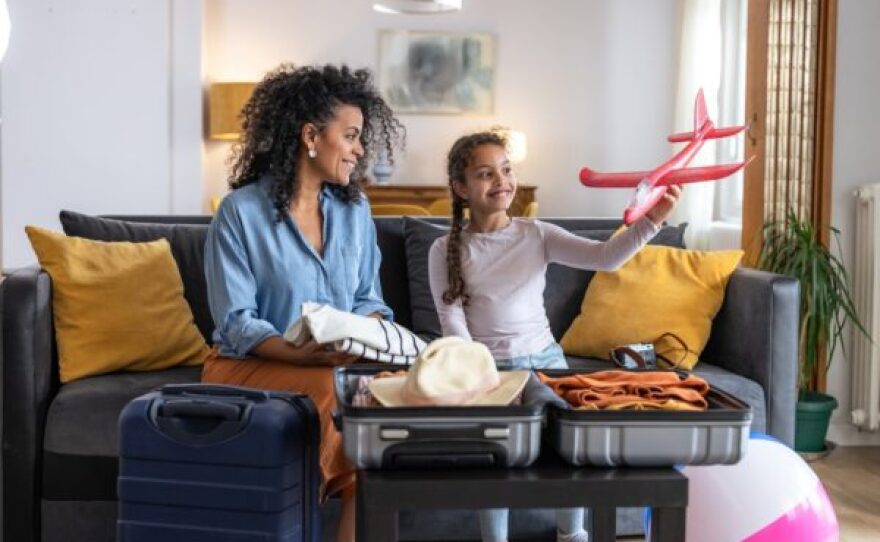I remember our first big trip with all three of our children. We were excited but also nervous about how they'll handle changes in their routine and being in a new place. As a parent of two autistic children, I've learned that preparation and flexibility are the keys for a successful trip. With careful planning and plenty of trial and error, we found ways to make traveling more fun for everyone. I hope sharing these tips and tricks will make your family’s travel experiences smooth sailing.
Traveling with kids is a chance to experience new places, meet people, try different foods, and enjoy fun activities together. While it may feel overwhelming at first, you can help your child enjoy the journey and make the most of your your trip by following these tips:
1. Start small
Before planning a big trip far away, start locally. Take short trips to explore your community. Ask your child to help plan what you need to get there. Riding in cars, buses, subways, or trains is a great way for them to learn about using tickets or paying tolls.
2. Prepare in advance
Talk with your child about what to expect before your trip. Share pictures, videos, or books about your destination. Role-play different parts of your journey, like stopping at a rest area, eating at a new restaurant, boarding a plane, or checking into a hotel. If your child feels anxious about the unknown, these conversations can build excitement for the adventure ahead and ease concerns.
3. Pack sensory-friendly items
If your child is sensitive to lights or sounds, pack items that will help them stay comfortable. Noise-canceling headphones, sunglasses, or a favorite fidget toy can make a big difference in how they experience the journey. Have familiar snacks and comfort items ready to avoid sensory overload. A nightlight or white noise machine can also help children feel more comfortable in a new place.
4. Involve your child in the planning
Let your child help choose activities or destinations that interest them. Whether it’s picking a park to visit or choosing snacks for the trip, involving them in the planning gives them a sense of control and anticipation. They’ll look forward to activities they helped plan.
5. Create a travel routine
Even though you're away from home, try to keep some of your child's daily routines intact. Plan activities around their usual nap and meal times if possible. If you’re changing time zones, gradually adjust nap and bedtimes a few days before the trip. Bring familiar items like a favorite blanket or toy, and keep mealtimes and bedtimes as consistent as possible. Maintaining these routines can also provide comfort and stability.
6. Make time for breaks
Traveling can be exhausting for everyone, especially kids. Plan regular breaks where your child can relax, play, or enjoy some quiet time. A stop at a park or finding a quiet corner in the airport can help recharge their energy and lower stress (and yours, too!).
7. Practice patience and flexibility
Travel can be unpredictable, and things don’t always go as planned. It's important to stay flexible and patient, both with your child and with whatever comes up. If something unexpected happens, like a delayed flight or a crowded attraction, take a deep breath and adjust. Showing your child how to calmly handle surprises is a valuable lesson in resilience.
8. Create a travel treasures collection
Take a tip from Carl and his friends from "Carl the Collector" — create your own collection! Help your child look for small mementos along the way, like maps, brochures, boarding passes, tickets, or seashells. Use a resealable plastic bag to collect these items, and enjoy reliving the memories together after the trip.
By preparing ahead, keeping routines, and staying flexible, traveling can be a great experience for your whole family. Remember, the journey is just as important as the destination, and with the right support, you can create lasting memories along the way.







